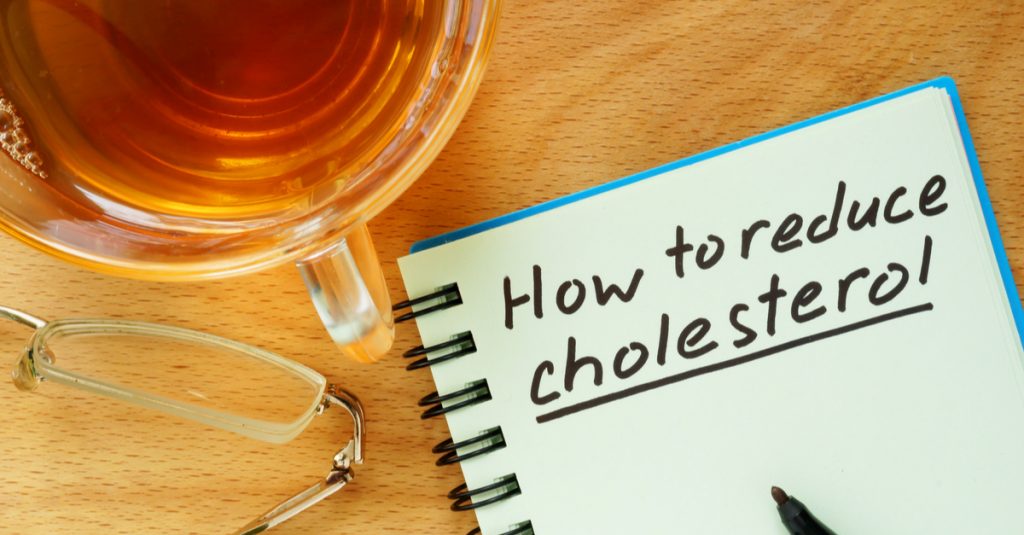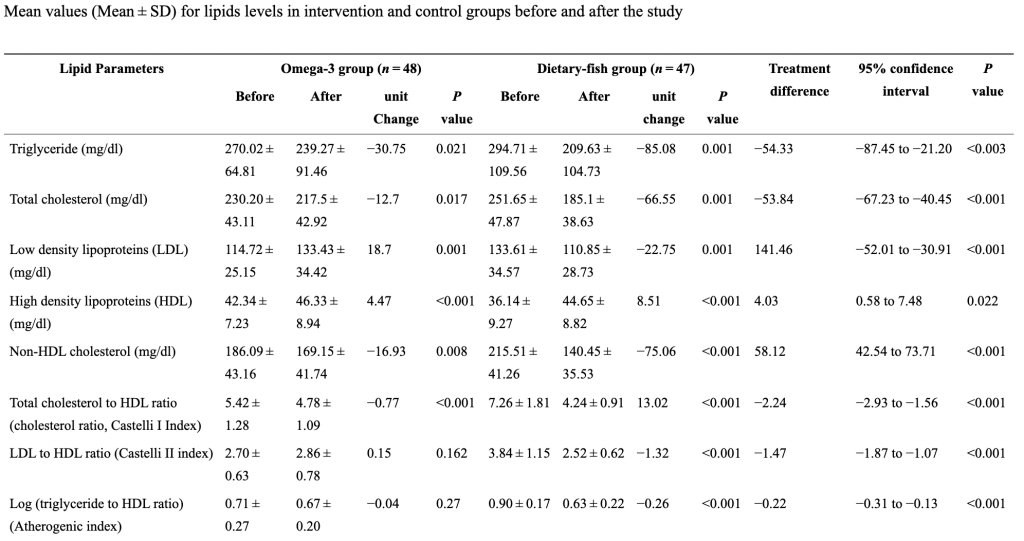Lower Your Cholesterol

Even with these new ideas that inflammation is the cause of heart disease, cholesterol, and its constituents still account for heart problems in most cases. So this time, we’ll discuss what you can do if your lipid level test results exceed optimal levels. We’ll start by looking at how to lower your cholesterol without pills.
This article was last reviewed by Svetlana Baloban, Healsens, on January 24, 2020. This article was last modified on July 24, 2021.
However, before getting down to this fascinating topic, let’s remember what problem we are solving.
☝️ Heart disease is the main cause of death.
☝️ 3.9 million people die from heart attacks in Europe every year1. And the cause of heart disease is the inflammatory process.
This inflammatory process begins with an excessive amount of LDL (“bad” cholesterol) particles appearing on the walls of the coronary arteries and causing subsequent oxidation. In turn, HDL particles (“good” cholesterol) reduce the risk of heart disease. So, they move excess LDL back to the liver and thus prevent inflammation and oxidation. We already discussed this topic in our article about the lipid profile.
There is yet another independent risk factor for heart disease: triglyceride (unbound fat) levels. Excessive amounts of high glycemic carbohydrates in the diet, as well as alcohol abuse, are common causes of elevated triglyceride levels.
How then can you lower your cholesterol? The first step to normalizing your cholesterol and triglyceride levels is following a healthy diet.
IN THIS ARTICLE
1
RELATED ARTICLES
How to Lower Your Cholesterol Naturally
Removing trans fats
There are two main types of trans fats in food: naturally-occurring and artificial trans fats. Let’s figure it out. Naturally-occurring trans fats are produced in the guts of some animals. Artificial trans fats (or trans fatty acids), on the other hand, are created in an industrial process. And for this, hydrogen is added to liquid vegetable oils to make them more solid.
It’s worth knowing that trans fats make us fatter than any other food with the same amount of calories. But that’s not all. Researchers at Wake Forest University have found that trans fats increase the amount of fat around the belly2. That happens not only because new fat is added, but also because fat from other areas moves to the abdominal area.
Of course, trans fats raise LDL (bad) cholesterol and lower HDL (good) cholesterol. So it is obvious that it increases the risk of heart disease and stroke.
This is why the American Heart Association recommends reducing foods containing partially hydrogenated vegetable oils. And in November 2013, the FDA tentatively determined that partially hydrogenated oils were no longer considered safe3. Therefore, it is recommended to choose foods where the trans fat content is 0. Let’s find out which foods can contain trans fats!
Unfortunately, trans fats can be found in many foods, such as donuts and pastries, cakes and pie crusts, cookies and frozen pizzas, margarine and other spreads. You can determine the amount of trans fat by looking at the Product Facts label. However, if “0 grams of trans fat” is indicated, it doesn’t mean that there are no trans fats there. According to the rules, they can still contain between 0 and less than 0.5 grams of trans fat per serving. You can also identify trans fats by reading the ingredient list and looking for ingredients called “partially hydrogenated oils.”
Reducing saturated fat
There is nothing more important to a healthy heart than reducing your intake of trans and saturated fats. They are critical to the effectiveness of the diet. And none of the other nutrients in the diet raises LDL levels like saturated fat.
Foods high in saturated fats include:
- meat pies
- sausages and fatty cuts of meat
- fatty beef,
- lamb,
- pork,
- poultry with skin,
- foods containing coconut or palm oil
- cakes and biscuits
- butter, ghee and lard
- cream
- hard cheeses
- other dairy products made from whole or reduced-fat (2 percent) milk
In addition, many baked goods and fried foods can contain high levels of saturated fats. Health advocates have repeatedly suggested the use of policy instruments to influence consumer behavior. For example, in 2011, Denmark even introduced a tax on saturated fat in food. But a year later, this tax was canceled, although studies have shown its effectiveness in changing consumer behavior4.
It should be said that a healthy body is able to maintain normal lipid levels, regardless of cholesterol intake. In other words, our liver does an excellent job of regulating blood cholesterol levels. However, if you passed the test and saw that you need to lower your cholesterol, then, probably, these mechanisms of cholesterol metabolism have begun to work incorrectly.
To prevent this problem, it is recommended to choose foods with less than 10% D.V* saturated fat per serving. The question naturally arises, what are the alternatives to saturated fats?
*For a 1,500-calorie diet, your daily DRI would be: Total fat: 33 to 58 grams. Saturated fat: No more than 15 grams. Cholesterol: No more than 200 to 300 grams.
What then to eat?
To get the nutrients you need, eat a diet that emphasizes:
- fruits vegetables,
- whole grains,
- low-fat dairy products,
- poultry, fish and nuts,
- limiting red meat and sugary foods and drinks.
- Choose lean meats and poultry without skin. And cook them without adding saturated and trans fats.
You should replace foods high in saturated fat with foods high in monounsaturated and / or polyunsaturated fats. This means eating foods made with liquid vegetable oil, but not with tropical oils. It also means eating fish and nuts. You can also try replacing some of the meat you eat with beans or legumes.
Fruits and vegetables aren’t just good for reducing your intake of trans and saturated fats. Soluble fiber, most of which is found in fruits and vegetables, also inhibits fat absorption. And this helps to lower the level of bad cholesterol (LDL). It is useful enrich your menu with legumes, oats (oat bread, porridge, oat bran in smoothies, and bread crumbs), and ground flax seeds, which can be sprinkled on almost anything.
Follow us on Facebook|| Instagram || Telegram || Youtube
Quit smoking
Smokers are two to four times more likely to develop a heart attack than non-smokers5. There are 4,000 toxic substances in tobacco and tobacco smoke, many of which accelerate the processes leading to heart attacks. Cigarette smoking significantly increases the overall level of inflammation in the body6 and dramatically affects the growth of free radicals that accelerate the oxidation of LDL7. In addition, smoking increases the heart rate (HR)8, which accelerates wear and tear on the arteries. We could go on, but we’d rather just recommend not smoking and avoiding secondhand smoke.
Normalize weight
Being overweight is associated with a wide range of health problems, as well as several other risk factors for heart disease. Overweight is becoming a major factor in the development of metabolic syndrome9, type II diabetes, and hypertension10. Obesity significantly increases the risk of heart attacks, according to the extensive Framingham Study. Tens of thousands of people have been observed in this study for over 40 years11. But that’s not all! Being overweight is a major risk factor for increased inflammation in the body12. This is another argument for normalizing weight.
As we discussed above, optimal weight plays a key role in heart disease prevention. Meanwhile, losing even five kilograms of weight can significantly reduce the risk of heart attacks. So, losing weight will help lower LDL, total cholesterol and triglyceride levels. At the same time, it can help you raise your good HDL cholesterol levels.
One study found that adults who took part in a 12-week exercise program, had their LDL cholesterol levels dropped by 18 points and total cholesterol dropped by 26 points13.
Follow us on Facebook|| Instagram || Telegram || Youtube
Exploring Food Supplements to Help Lower Your Cholesterol Levels
Omega-3 & Fresh Fish
Certain food supplements may also have a positive effect on lipid profile recovery. So the 2017 study showed positive results when supplemented with omega-3 supplements14. At the same time, it was found that the best results were achieved in the group with fresh fish. So, people consumed 250 g farmed trout fish two times a week for dinner and lunch for 8 weeks. For omega-3s, the dosage was 2 g / day of omega-3 capsules. During the study, the total cholesterol levels dietary-fish group decreased by 53.84 mg / dL (12.7 mg / dL in omega-3 group).

Meanwhile, the method of preparing fish does not play a role and it turns out to be more significant how much fish has consumed1516. And finally, fish is generally recommended as a part of a healthy diet and it is considered to be a key component of a cardio-protective diet17. Moreover, it is an important source of various nutrients, such as protein, n-3 fatty acids, vitamin D, iodine, and selenium.
If you do plan on taking omega-3 fatty acids, please discuss this with your doctor. Especially if you are taking blood-thinning medications.
Flaxseed
Flaxseed contains considerable amounts of α-linolenic acid, phenolic compounds, and lignans, which each have the capacity to reduce circulating lipid concentrations18. So, a meta-analysis of sixty-two randomized controlled trials with a total of 3772 participants suggested that flaxseed supplementation can reduce total serum cholesterol, triglyceride, and LDL in unhealthy subjects with high baseline lipids level19. At the same time, the addition of flaxseed is useful if you are already taking medications to normalize your lipid profile. In a study, participants took 28 g of flaxseed for 10 weeks.
Alpha-Lipoic Acid
Some other research has proven that adding alpha-lipoic acid can enhance lipid profile parameters, except HDL cholesterol levels20.
Calcium and Calcium+D
Positive results were achieved in the study of effects produced by calcium and calcium+D supplements on excess weight patients21. The results showed a decrease in triglycerides, total cholesterol, and LDL cholesterol.
Red Yeast Rice
Red yeast rice (RYR), also called red fermented rice or red mold rice, is used as a dietary supplement to lower cholesterol levels2223. It contains varying amounts of natural monacolin K, which is a structural homolog to lovastatin, and shows properties comparable to synthetic statins. So, the research demonstrated that red yeast rice might be able to reduce cardiac events and provide positive effects on cardiovascular outcomes in a fashion similar to that of prescription statin therapy.
The safety profile of RYR supplements is highly similar to that of statins24. That is why RYR is widely used in prescriptions, as well as an alternative medicine and a food supplement, in Asia, the United States, and European countries.
So, we have described natural ways to lower your cholesterol. Of course, there are effective drug treatments for lowering lipid levels. These include statins among others.
LDL Well-being Wisdom with Healsens
Elevate your health journey with Healsens by seamlessly integrating insights from your LDL blood test results. These insights go beyond just your LDL markers, offering a comprehensive view of your overall health and immune status. With Healsens, you gain access to personalized advice on improving your lipid profile and reducing LDL levels naturally. Additionally, Healsens helps you decipher your test results and shares recipes to naturally lower LDL, empowering you to make informed choices for a healthier lifestyle.
Ordering Blood Tests in the Netherlands
If you are interested in checking your LDL level, you can easily purchase a blood test kit from Healsens.
1 Download the Healsens App from Google Play or the App Store, depending on your device.
2 Complete the registration process in the app.
3 Tap on ”List of Available Tests”.
4 Find the Cholesterol Pack and tap on the “Add to Cart” button. Proceed with the ordering process.
» Discover how to check and improve your health with Healsens preventive checkup plan.
Note
If you want to assess your LDL level but are not residing in the Netherlands or have opted for a different laboratory, Healsens cannot upload your blood test results for you. Nevertheless, you have the option to undergo the required tests at any laboratory in your country and manually input the obtained results into the application. Healsens will open more opportunities for you to naturally normalize your blood test results. Furthermore, you gain full access to investigate your health risk assessment based on the provided data.
FURTHER READING
Follow us on Facebook|| Instagram || Telegram || Twitter || Youtube
Source: ©️2019 Healsens B.V. All right reserve
- European Cardiovascular Disease Statistics 2017
- Trans fat diet induces abdominal obesity and changes in insulin sensitivity in monkeys
- Tentative Determination Regarding Partially Hydrogenated Oils; Request for Comments and for Scientific Data and Information
- The Danish Tax on Saturated Fat: Why It Did Not Survive
- How Tobacco Smoke Causes Disease
- Smoking and Inflammation
- Facilitated nitration and oxidation of LDL in cigarette smokers
- Effects of smoking on heart rate at rest and during exercise, and on heart rate recovery, in young adults
- A clinical perspective of obesity, metabolic syndrome and cardiovascular disease
- Obesity as a Risk Factor for Artherial Hypertension
- Overweight and obesity as determinants of cardiovascular risk: the Framingham experience
- Obesity and inflammation: the linking mechanism and the complications
- Effects of a 12-week healthy-life exercise program on oxidized low-density lipoprotein cholesterol and carotid intima-media thickness in obese elderly women
- Comparison of the effect of omega-3 supplements and fresh fish on lipid profile: a randomized, open-labeled trial
- Effect of different fish cooking methods on plasma lipid levels healthy young adults in Kendari, Southeast Sulawesi
- Effects of baked and raw salmon fillet on lipids and n-3 PUFAs in serum and tissues in Zucker fa/fa rats
- Nutrients in Fish and Possible Associations with Cardiovascular Disease Risk Factors in Metabolic Syndrome
- Effect of flaxseed supplementation on lipid profile: An updated systematic review and dose-response meta-analysis of sixty-two randomized controlled trials
- Flaxseed (Linum Usitatissimum L.) Supplementation in Patients Undergoing Lipoprotein Apheresis for Severe Hyperlipidemia—A Pilot Study
- The effects of alpha-lipoic acid supplementation on glucose control and lipid profiles among patients with metabolic diseases: A systematic review and meta-analysis of randomized controlled trials
- Evaluating the Effects of Supplementation with Calcium, Vitamin D, or Their Combination on Lipid Profile and Body Weight in Overweight Military Personnel
- Red Yeast Rice for Hypercholesterolemia
- Effect of Xuezhikang, an extract from red yeast Chinese rice, on coronary events in a Chinese population with previous myocardial infarction
- Red Yeast Rice: A Systematic Review of the Traditional Uses, Chemistry, Pharmacology, and Quality Control of an Important Chinese Folk Medicine




